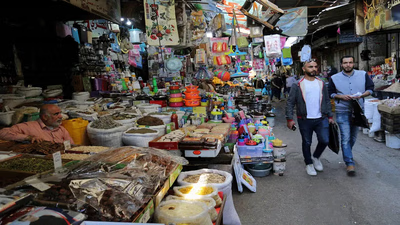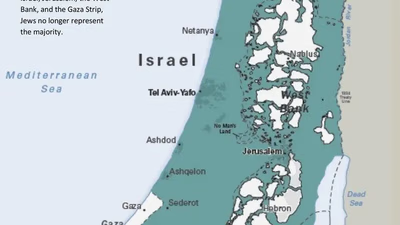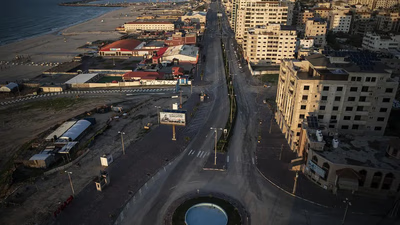
Gaza Strip economy: family businesses and trade challenges.
According to Palestinian statistics, more than 4.2 million Palestinians live on the West Bank. According to a survey presented at the Sixth Herzliya Conference on Israel's National Security Level, there are 4.1 million Palestinians. According to Palestinian statistics, there are more than 1.2 million Palestinians in the Gaza Strip . Palestine, as an old state in the Middle East, although suffering from occupation, still has its economy and economic institutions. Palestine's gross domestic product, including the West Bank and Gaza Strip , is $ 8 billion. In this respect, Palestine is ranked 157th in the world.
Its economic growth is about 6 percent, which seems appropriate for a war-torn country. Of course, a large volume of this GDP and growth is related to the western territories of Palestine, and the Gaza Strip has less of a role in these figures. The Gaza Strip industry is often made up of family businesses that produce textiles, soap, olive wood carvings, and pearl oyster souvenirs.
The economic output of the Gaza Strip fell by a third between 1992 and 1996. This fall has been attributed to the closure of the Gaza Strip borders by the Zionist regime and the exercise of extensive border control in response to terrorism in Palestine. As a result of the Palestinian attacks on the occupying Zionist regime, the commodity market relations that had previously been established between this regime and the Gaza Strip were disrupted. The most negative social impact of this fall has been the rise of rising unemployment.
In the following years, the Zionists' appeal to the policy of closing the borders of the Gaza Strip diminished, and in 1998, the regime implemented new policies to reduce the impact of border closures and other security measures on the entry of Palestinian goods and labor into the Zionist regime. These changes led to a three-year recovery in the Gaza Strip economy. The period of economic recovery ended in the last quarter of 2000 with the beginning of the Al-Aqsa Intifada.
The Al-Aqsa Intifada led to the closure of the Zionist regime's border by the regime's military forces, as well as the repeated imposition of restrictions on Palestinian movement in the Autonomous Region, severely disrupting trade and labor movements. In 2001, and even more severely in 2002, international unrest and military action by the occupying regime in areas controlled by the Palestinian Authority led to the destruction of the capital and executive structure, widespread disruption of trade, and a sharp decline in gross domestic product.
Another major factor in the decline in income was the decline in the number of Gaza residents allowed to enter the occupied territories. After Israel withdrew from the Gaza Strip , a limited number of Palestinian workers returned to the occupied territories, but after Hamas won the Palestinian parliamentary elections in 2006, it was announced that Palestine intended to restrict their work permits or not at all. According to the CIA World Book, the Gaza Strip 's gross domestic product in 2001 saw a 35 percent drop in per capita income to $ 625 a year, and 60 percent of the Gaza Strip 's population now lives below the poverty line.
-

Palestine, with over 4. 2 million residents in the West Bank and 1. 2 million in the Gaza Strip, faces significant economic challenges due to ongoing occupation. The gross domestic product (GDP) of Palestine is approximately $8 billion, ranking it 157th globally, with a growth rate of about 6%. However, this growth is largely driven by the West Bank, while the Gaza Strip"s economy has suffered considerably. The industrial sector in Gaza primarily consists of family-run businesses producing textiles and crafts. Economic output in Gaza declined sharply between 1992 and 1996 due to border closures imposed by Israel, which disrupted established trade relations and led to rising unemployment. Although there was a brief recovery from 1998 until the onset of the Al-Aqsa Intifada in late 2000, subsequent military actions and restrictions severely hampered trade and labor movements.
By 2001, GDP per capita plummeted by 35%, with around 60% of Gaza"s population living below the poverty line. The political landscape further complicates economic recovery efforts as restrictions on work permits for Palestinian workers persist.
-

Palestine"s economy is heavily reliant on international financial aid, which supports the Palestinian Authority and public services. Despite political restrictions impacting trade, Palestine exports agricultural products and crafts to regional markets. The economy faces significant challenges, including Israeli trade restrictions, recurrent hostilities, and internal political divides. Following the 2006 elections, financial aid from international donors has been crucial, with the U. S. and EU providing substantial support. However, economic pressures have led to rising tensions between political factions like Hamas and Fatah. The Palestinian Authority"s budget is largely dependent on external funding, with a notable deficit exacerbated by high government spending.
The GDP growth rate has fluctuated over recent years, reflecting ongoing economic instability due to occupation-related limitations. As of 2023, economic growth is expected to soften further.
-

The history of present-day Palestine is marked by a rich tapestry of civilizations, including Canaanites, Philistines, and various Islamic empires. The region became a significant trade crossroads, especially after the Arab Muslim conquest in the 7th century. The Ottoman Empire controlled Palestine for four centuries until its collapse post-World War I, leading to British mandate and the controversial Balfour Declaration of 1917. This declaration supported a Jewish homeland in Palestine, igniting tensions between Jewish immigrants and the Arab population. The UN"s 1947 partition plan aimed to resolve these tensions by creating separate Jewish and Arab states but was rejected by Arab leaders, leading to the 1948 Arab-Israeli War and significant displacement of Palestinians known as Nakba. Following Israel"s declaration of independence, territorial disputes intensified as Israel expanded beyond UN-designated borders. The Gaza Strip fell under Egyptian control while Jordan administered the West Bank. The Six-Day War in 1967 further complicated matters with Israeli occupation of these territories.
Since then, various peace efforts have sought a two-state solution, yet conflicts persist over borders and statehood aspirations. Present-day Palestine encompasses the West Bank and Gaza Strip, with its future status remaining uncertain amidst ongoing disputes.
-

Gaza, part of the Palestinian territories, primarily connects to the outside world through the Rafah Border Crossing with Egypt. Travelers should remain informed about the evolving political and security landscape, as conditions can change rapidly. Coordination with local authorities, such as the Palestinian Authority or United Nations agencies, is essential for guidance on travel routes and necessary documentation. Freight transport in Gaza is predominantly road-based and privatized, with a significant number of older vehicles in operation. The international trade for Palestinian areas has historically relied on Israeli seaports like Haifa and Ashdod, facing delays due to security checks. Plans for a Gaza Seaport have been hindered by Israeli opposition but include provisions for managing operations and security through a joint protocol. The Erez Border Crossing offers access to Israel and the West Bank but is subject to strict regulations. Alternatively, travelers can exit Gaza through Rafah into Egypt and then proceed to the West Bank via Jordan, which may involve various transportation methods.
-

Citrus fruits, strawberries, and flowers are key exports from the Gaza Strip, alongside olives, vegetables, meat, and dairy products. The region faces significant trade challenges due to ongoing sieges by Israel and Egypt, which restrict movement and access to essential goods. Imports primarily consist of food, consumer goods, and construction materials. The political landscape has shifted since the 2005 Israeli withdrawal, with Hamas gaining control in 2007. This has complicated trade relations further as Israel maintains control over Gaza"s airspace and waters. Environmental issues such as desertification and water resource management also impact agricultural productivity. Despite these challenges, Gaza"s temperate climate supports its agricultural sector. The region"s historical significance as part of the "cradle of humanity" adds to its cultural value but does not alleviate current economic hardships.
Efforts to reopen Yasser Arafat International Airport have stalled due to ongoing negotiations between Palestinian authorities and Israeli officials. "





